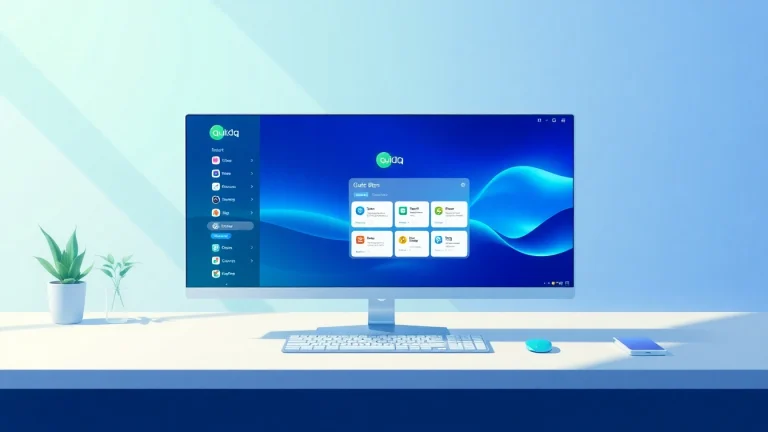
Enhancing Customer Engagement Using a Website Chatbot for Your Business
Introduction to Website Chatbots
What Is a Website Chatbot?
A website chatbot is a software application that simulates human conversation through voice or text interactions. Operable on websites, these chatbots utilize artificial intelligence (AI) and machine learning to understand users’ inquiries, provide answers, and assist with various tasks in real-time. Unlike traditional customer support methods, chatbots offer immediate assistance, enhancing engagement levels and streamlining processes for both users and businesses. As global digital communication continues to evolve, the importance of integrating a website chatbot into your online presence cannot be overstated.
Benefits of Implementing a Website Chatbot
Implementing a website chatbot can significantly transform customer interactions. Here are some key benefits:
- 24/7 Availability: Unlike human agents, chatbots can be available around the clock, providing immediate responses and assistance even outside of business hours.
- Cost-Effective: Reducing the need for extensive human customer service teams, chatbots can drastically lower operational costs.
- Improved Customer Engagement: Engaging customers through personalized conversations leads to higher satisfaction and retention rates.
- Data Collection and Insights: Chatbots can gather essential data from customer interactions, providing businesses with valuable insights to enhance their offerings and marketing strategies.
- Scalability: As businesses grow, chatbots can handle increasing queries efficiently, without the need for additional resources.
Common Use Cases for Website Chatbots
Website chatbots can be employed across various industries and functionalities. Some common use cases include:
- Customer Support: Offering instant answers to frequently asked questions, troubleshooting, and guiding users through processes.
- Lead Generation: Qualifying leads by collecting user information and facilitating connections with sales teams.
- Booking and Scheduling: Allowing users to make appointments, reservations, or purchases without human intervention.
- Feedback Collection: Gathering customer opinions regarding products, services, and overall experiences to drive improvement.
- Product Recommendations: Assisting users in finding products that best meet their needs based on their preferences and previous interactions.
Choosing the Right Website Chatbot Solution
Key Features to Consider
When selecting a website chatbot solution, certain features are vital to ensure effectiveness:
- Natural Language Processing (NLP): This feature allows chatbots to understand and interpret user input effectively, providing relevant responses.
- Integration Capabilities: The ability to seamlessly fit into existing systems (e.g., CRM, eCommerce platforms) enhances functionality and user experience.
- Customization: Look for options to personalize the chatbot’s interface and conversation styles to align with your brand.
- Analytics and Reporting: Tracking performance metrics helps assess chatbot success and identify areas for improvement.
- Multilingual Support: In a global market, supporting multiple languages can significantly widen your user base.
Comparing Leading Website Chatbot Platforms
When choosing a chatbot platform, it’s necessary to compare the offerings of leading providers carefully. Popular options include:
- Intercom: Focuses on customer communication across various channels, providing rich reporting and analytics.
- Drift: Emphasizes real-time engagement and lead generation, ideal for businesses seeking to enhance sales conversations.
- Zendesk Chat: Integrates seamlessly with customer support suites, making it suitable for enhancing existing customer service frameworks.
- ManyChat: Primarily designed for social media platforms, it offers simple yet effective chatbot solutions for businesses.
Pricing Models and Budgeting
Understanding the pricing models of chatbot solutions is crucial for budgeting effectively. Several approaches are available:
- Monthly Subscription: Most platforms operate on a recurring monthly fee that scales based on features and user capacity.
- Pay-as-You-Go: Some services charge based on usage metrics, such as the number of interactions or users, providing flexibility for fluctuating demands.
- One-Time Licensing Fees: Certain platforms may require an upfront payment for a lifetime license, ideal for larger companies that prefer to avoid ongoing costs.
Best Practices for Deploying a Website Chatbot
Integrating with Existing Systems
Successful chatbot deployment begins with effective integration with existing business systems. Ensuring smooth data flow between your chatbot and CRM, eCommerce, or knowledge management systems is critical to provide a seamless user experience. Development teams should plan and execute API integrations carefully to avoid operational hiccups.
Mapping User Journey for Optimal Interaction
Understanding the user journey is crucial for designing meaningful chatbot interactions. Start by mapping out typical user pathways, identifying common questions and pain points along the way. This insight enables businesses to tailor chatbot dialogues that anticipate user needs and enhance engagement. Utilize user feedback to continuously refine these interaction paths.
Testing and Iteration Strategies
Regular testing and iteration of your chatbot are paramount to maintaining its effectiveness. Implement A/B testing to compare different conversation flows and measure user satisfaction. Solicit user feedback regularly, and be willing to adapt the bot’s functionality and responses based on real-world interactions. This process ensures the chatbot remains relevant, efficient, and user-friendly.
Measuring the Success of Your Website Chatbot
Key Performance Metrics to Track
To evaluate your chatbot’s performance, focus on several key performance metrics:
- Engagement Rate: Analyze how often users engage with the chatbot and the duration of their interactions.
- Resolution Rate: Determine how effectively the chatbot resolves user inquiries without human intervention.
- User Satisfaction Score: Collect feedback directly from users after interactions to gauge satisfaction levels.
- Return on Investment (ROI): Understand the cost savings and revenue generation associated with your chatbot’s deployment.
- Drop-off Rate: Monitor where users abandon interactions or inquiries to identify pain points needing resolution.
Feedback Loops and Continuous Improvement
Establishing feedback loops allows continuous improvement of your chatbot. Encourage users to provide feedback on their experience immediately following interactions. Regularly analyze this data and track performance metrics to identify patterns and areas needing attention. Actively implementing suggested changes can enhance user experience and satisfaction, solidifying the chatbot’s position as a valuable asset.
Success Stories and Case Studies
Examining successful chatbot implementations can provide valuable lessons and inspiration. For example, major retailers have integrated chatbots that helped reduce response times by significant margins, leading to increased customer satisfaction. Similarly, SaaS companies have reported increases in lead conversion rates after deploying chatbots designed to engage visitors proactively. Highlighting these successes can illustrate the potential benefits of effectively leveraging chatbots in various industries.
Future Trends in Website Chatbots
AI Advancements and Their Impact
As AI technology advances, we can expect that chatbots will evolve significantly, becoming even more sophisticated. Machine learning algorithms will improve their ability to understand nuanced language and user intent, enabling them to engage in more human-like conversations. Enhanced AI capabilities may lead to the rise of multi-functional chatbots that handle increasingly complex tasks beyond basic FAQs and troubleshooting.
Personalization and User Customization Trends
The future of chatbots will undoubtedly lean heavily towards personalization. Users expect interactions that feel tailored to their preferences and behaviors. Future chatbots will not only recognize returning users but also adapt their responses based on previous interactions. This will create a more engaging experience, fostering loyalty and satisfaction among users.
Regulatory and Ethical Considerations
As chatbots become more prevalent, businesses need to consider the ethical implications and regulatory requirements surrounding their usage. Ensuring data privacy and protecting user information will be of utmost importance. Future chatbot development will likely involve stringent compliance with regulations like GDPR, prompting organizations to develop clear policies regarding data handling and user consent.


